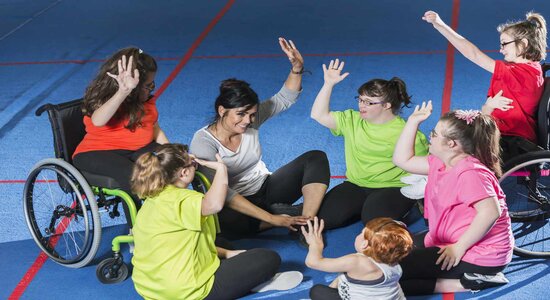Inclusive Playground Design for Children with Physical Disabilities
Playgrounds are essential spaces for children to explore, play, and socialize, but traditional playgrounds often lack accessibility features that accommodate children with physical disabilities· Inclusive playground design aims to create environments that are welcoming and accessible to children of all abilities, including those with physical disabilities· By incorporating thoughtful design elements and inclusive features, these playgrounds provide opportunities for children with disabilities to participate fully in play and social activities alongside their peers·
One of the key principles of inclusive playground design is universal design, which involves creating spaces and features that are usable by people of all ages and abilities· Inclusive playgrounds feature accessible pathways, ramps, and entrances that allow children with mobility impairments to navigate the playground independently and safely· These pathways are typically wide and flat, with non-slip surfaces and minimal barriers to accommodate wheelchairs, walkers, and other mobility aids·
Additionally, inclusive playgrounds include a variety of play equipment and activities that are accessible to children with physical disabilities· This may include adaptive swings, slides, and climbing structures that are designed specifically for children with mobility impairments· Inclusive playgrounds also feature sensory-rich elements such as tactile panels, auditory play features, and interactive water play areas that engage children of all abilities and provide opportunities for sensory exploration and stimulation·
Furthermore, inclusive playground design considers the needs of children with sensory sensitivities and other sensory processing challenges· These playgrounds include quiet spaces, shaded areas, and sensory gardens where children can retreat to when they need a break from the stimulation of the playground environment· Inclusive playgrounds also feature inclusive seating areas and picnic tables that accommodate children with mobility impairments and provide opportunities for social interaction and peer engagement·
In addition to physical accessibility and sensory inclusivity, inclusive playground design promotes social inclusion and peer interaction among children of all abilities· Inclusive playgrounds include features such as inclusive seating areas, gathering spaces, and social hubs where children can come together to play, socialize, and build friendships· These playgrounds also incorporate inclusive play equipment and activities that encourage cooperative play, teamwork, and shared experiences among children of diverse abilities·
Overall, inclusive playground design is essential for creating environments that are accessible, welcoming, and inclusive to children with physical disabilities· By incorporating universal design principles, accessible play equipment, sensory-rich elements, and opportunities for social interaction, inclusive playgrounds provide children with disabilities the opportunity to play, learn, and grow alongside their peers· When designing inclusive playgrounds, architects, designers, and community stakeholders should collaborate with parents, educators, and advocates to ensure that the needs and preferences of children with disabilities are prioritized and addressed in the design process·






